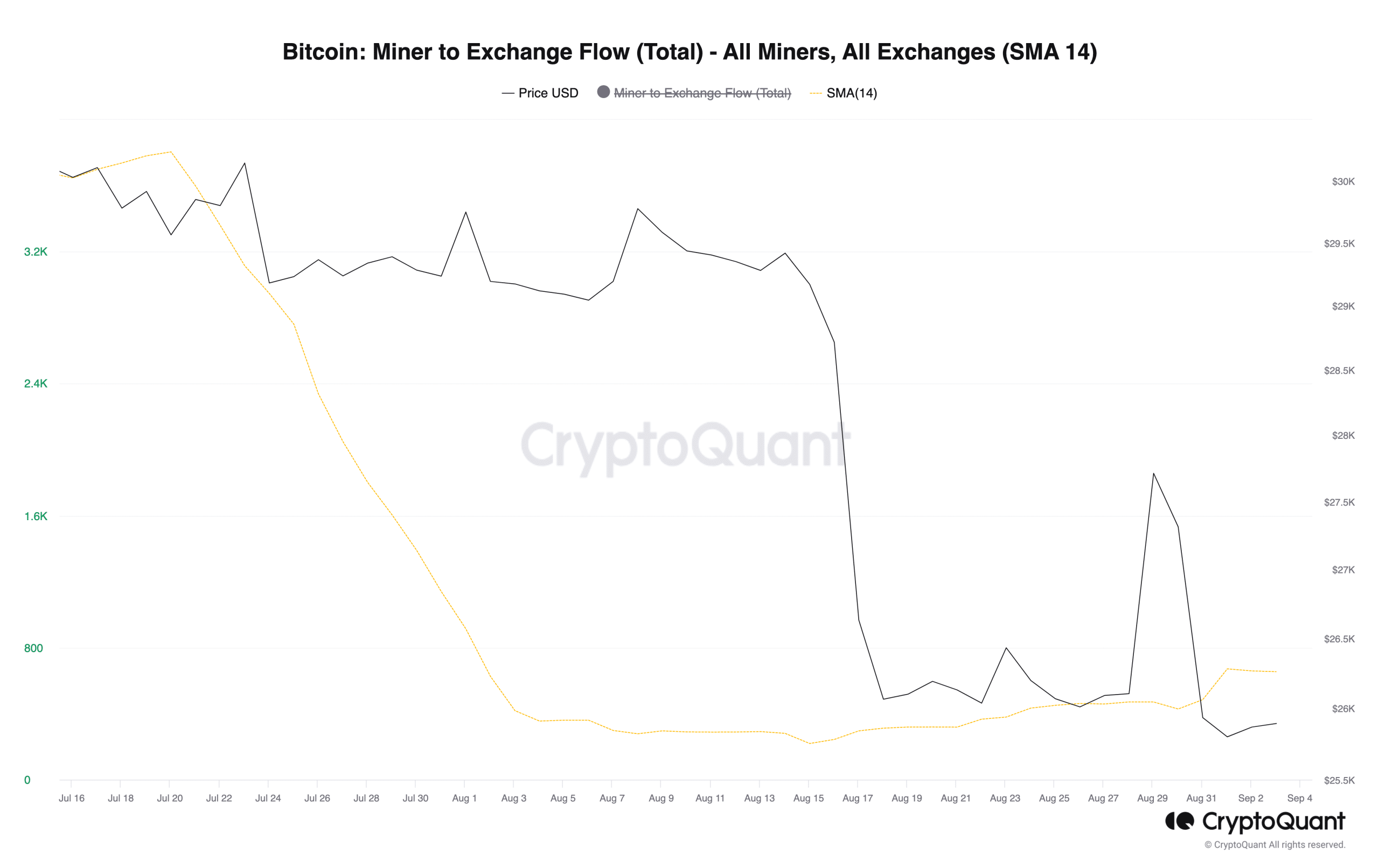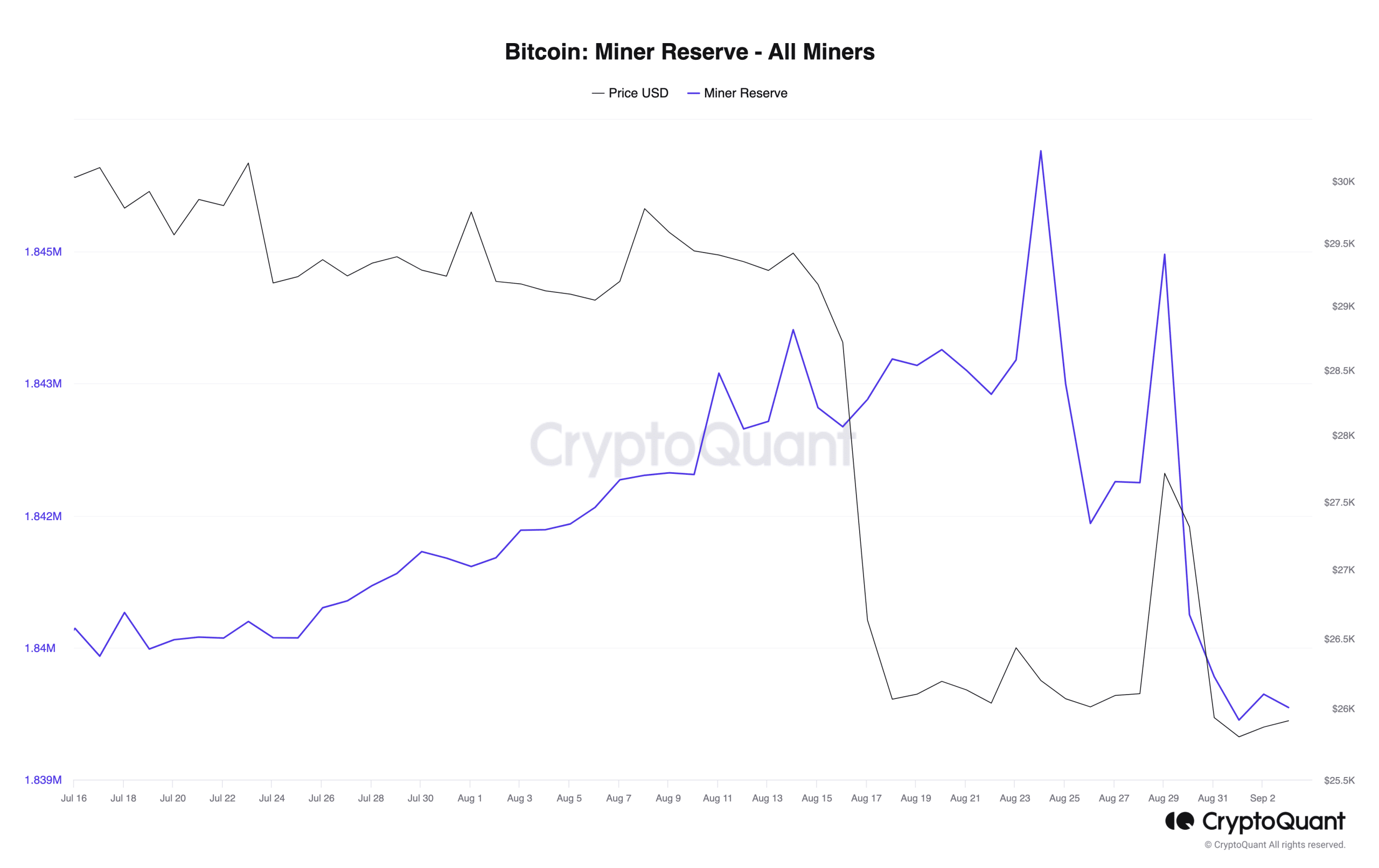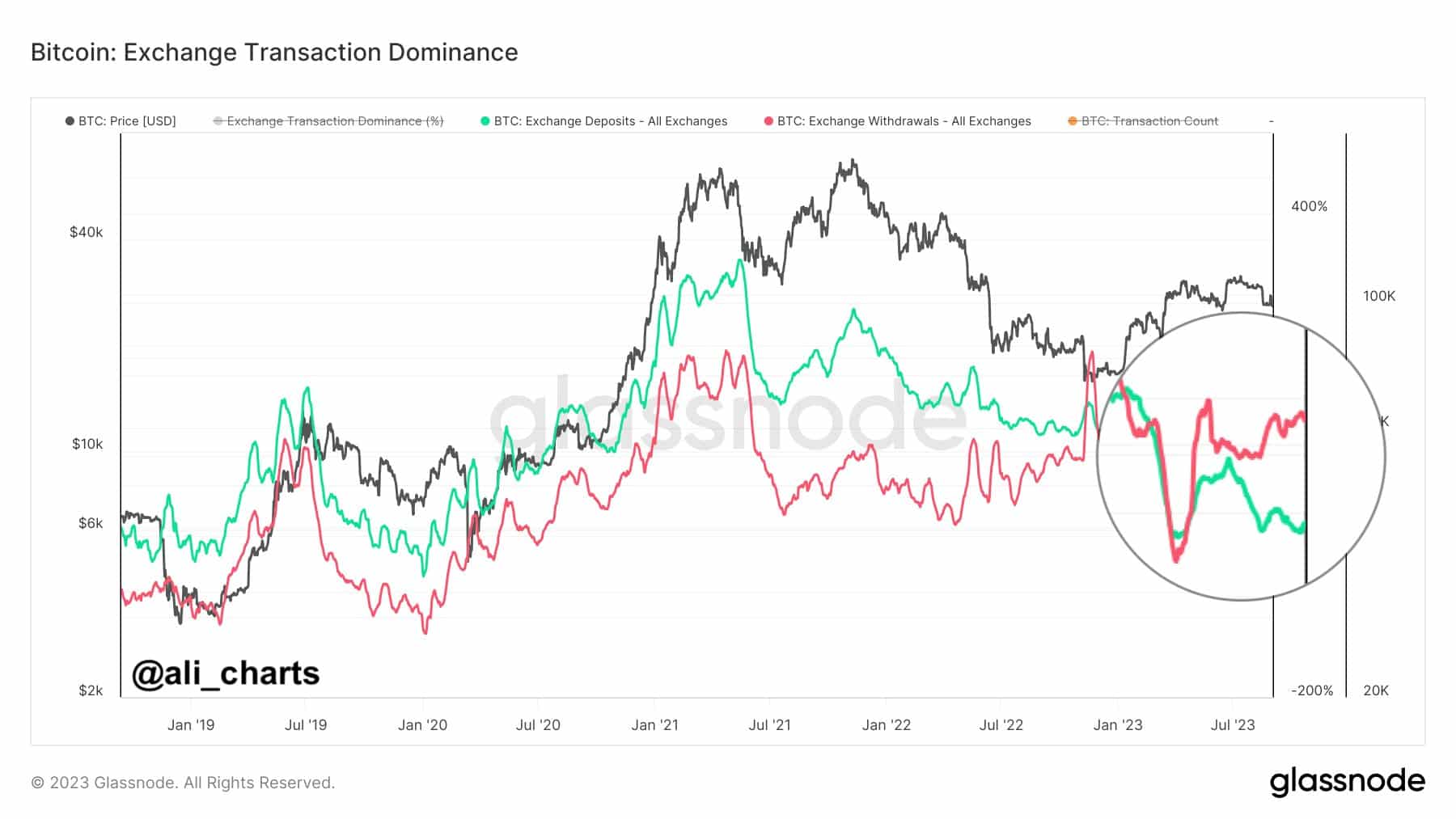- The SEC’s decision was seen as a blow to the hopes of approving a Bitcoin ETF in the near future and negatively affected the sensitivity in the cryptocurrency market.
- Evaluating the flow of BTC from miners to exchanges based on the 14-day moving average (SMA) revealed a 35% increase in this metric since August 31st.
- Another on-chain metric used to monitor Bitcoin mining activities, Miner Reserves, confirmed the outflow of coins from miners’ wallets.
Bitcoin experienced a sharp drop in price at the end of August; what is the connection between this drop and Bitcoin miners? Are miners selling?
Bitcoin Hit Its Lowest Point in 2 Months Due to the SEC’s Decision

The price of Bitcoin dropped to its lowest point in two months on August 31st after the U.S. Securities and Exchange Commission (SEC) announced an extension of the review period for all spot Bitcoin exchange-traded fund (ETF) applications.
The SEC’s decision was seen as a blow to the hopes of approving a Bitcoin ETF in the near future and negatively affected the sensitivity in the cryptocurrency market. BTC dropped to $25,333, its lowest level since June 16th.
As prices declined, miners began “selling” their coin holdings, according to data tracked by CryptoQuant. Evaluating the flow of BTC from miners to exchanges based on the 14-day moving average (SMA) revealed a 35% increase in this metric since August 31st.
The Miner to Exchange Flow metric measures the amount of BTC flowing from miners to exchanges. An increase in this metric indicates that miners are selling more BTC than they are producing. This could be a sign that miners have a bearish outlook on BTC’s price and want to sell their holdings.
According to a CryptoQuant analyst, in recent months, BTC’s price movements have closely aligned with instances when miners sent their coins to spot exchanges. The analyst stated:
“A notable development in recent months was a significant increase in the metric coinciding with BTC touching the $30,000 price level. Interestingly, this increase in miner activity contributed significantly to the decline in BTC’s value, pushing it towards the $25,000 threshold. Subsequently, the metric saw a pronounced decrease and hit a yearly low.”
In addition to the Miner to Exchange Flow metric, another on-chain metric used to monitor BTC mining activities, Miner Reserves, confirmed the outflow of coins from miners’ wallets. According to CryptoQuant, BTC Miner Reserves have been decreasing since August 29th.
This metric measures the number of coins held in wallets associated with miners. The value indicates the reserves that miners have not yet sold. Currently, this amount stands at 1.83 million BTC. Since August 29th, miners have sold 14,000 BTC.
Not Everyone Is Concerned About the Sell-Off
According to crypto analyst Ali Charts, “BTC withdrawals from exchanges are exceeding deposits for the third consecutive month.” When a cryptocurrency’s exchange reserves decrease, there are fewer sales. This often acts as a precursor to price recovery in most cases.
Ali suggests that the increase in exchange withdrawals may be due to investors increasingly preferring to store their assets in personal wallets and reflects a desire to avoid potential regulatory issues in light of recent changes in the United States.



